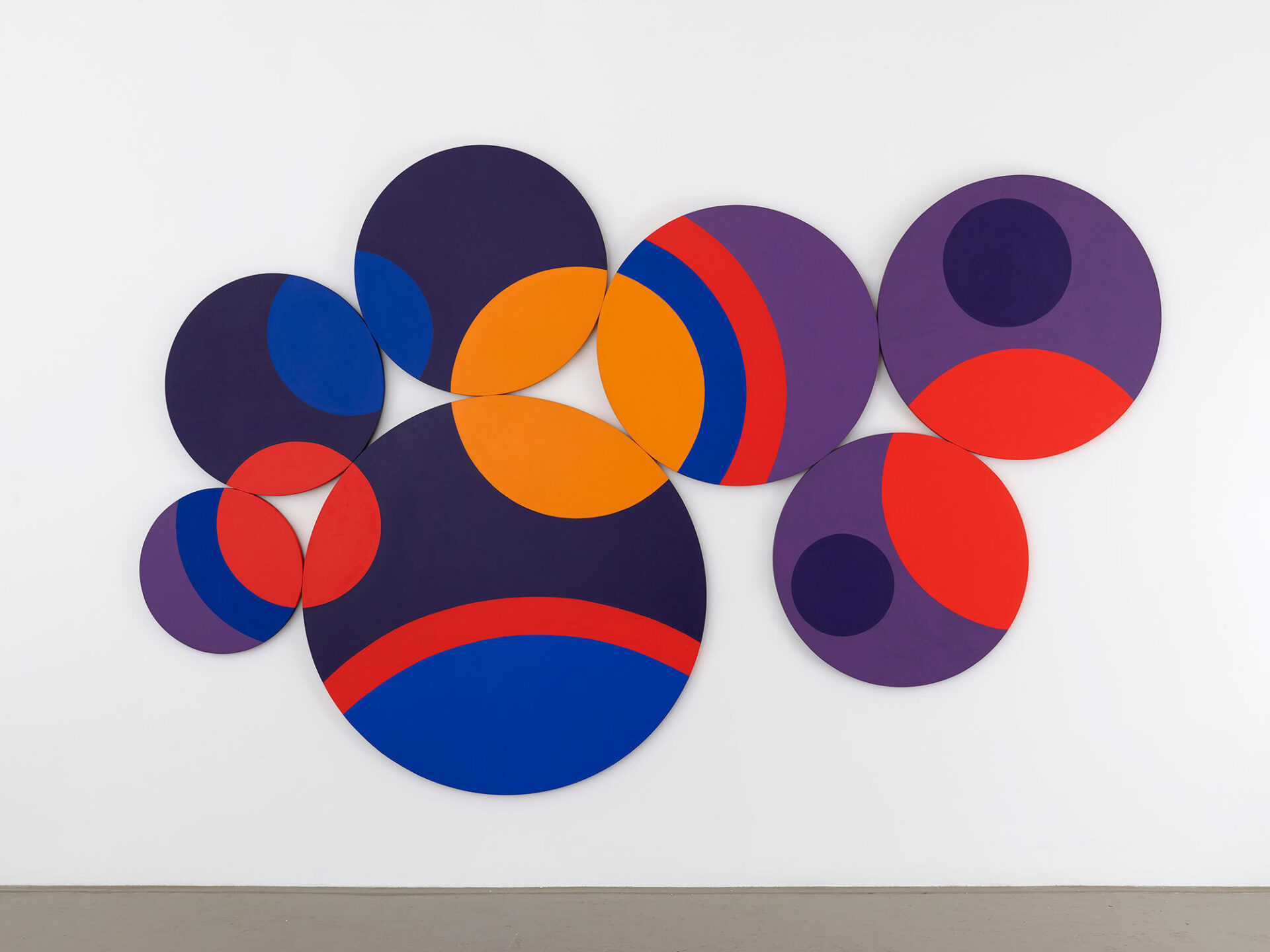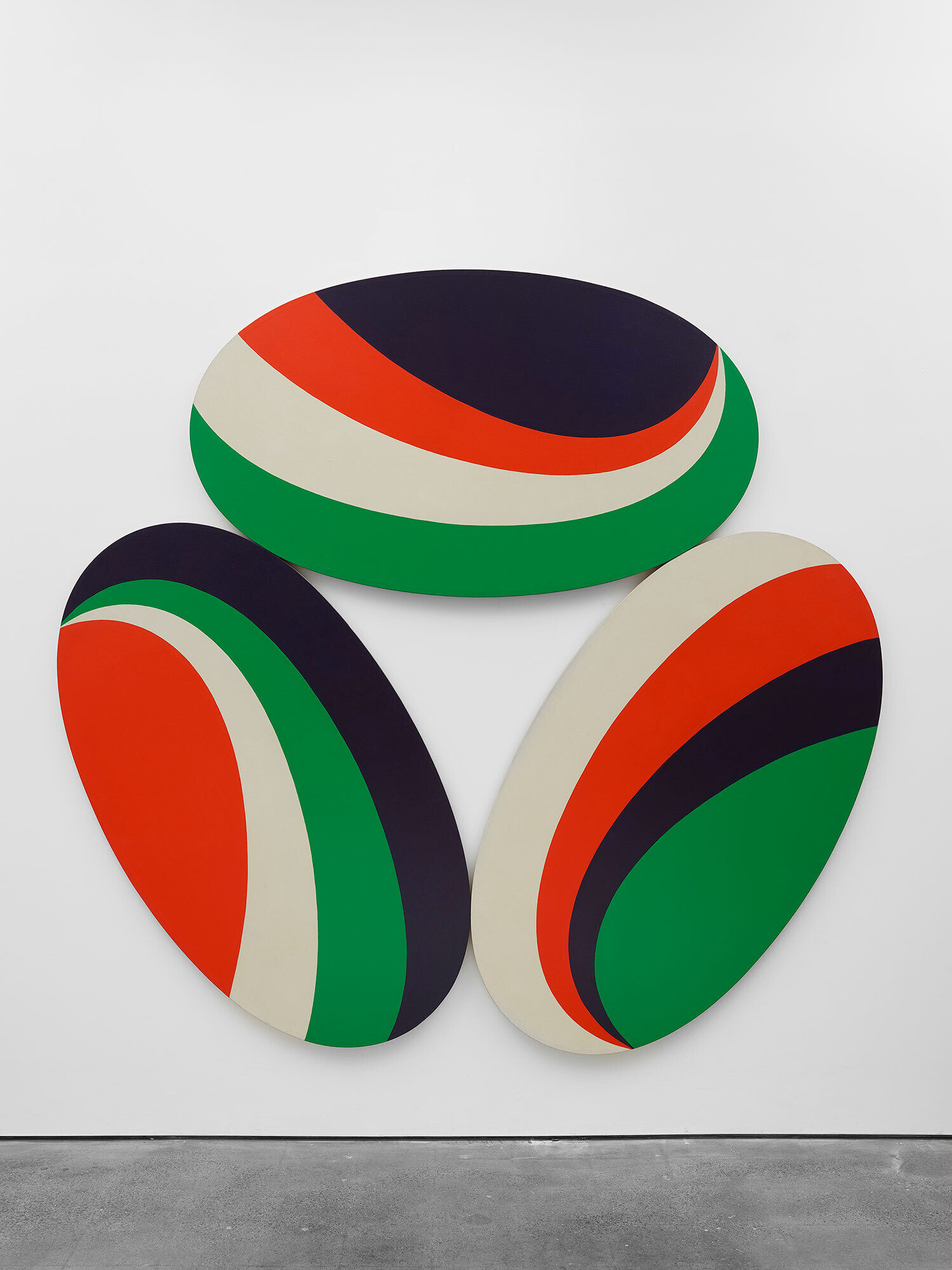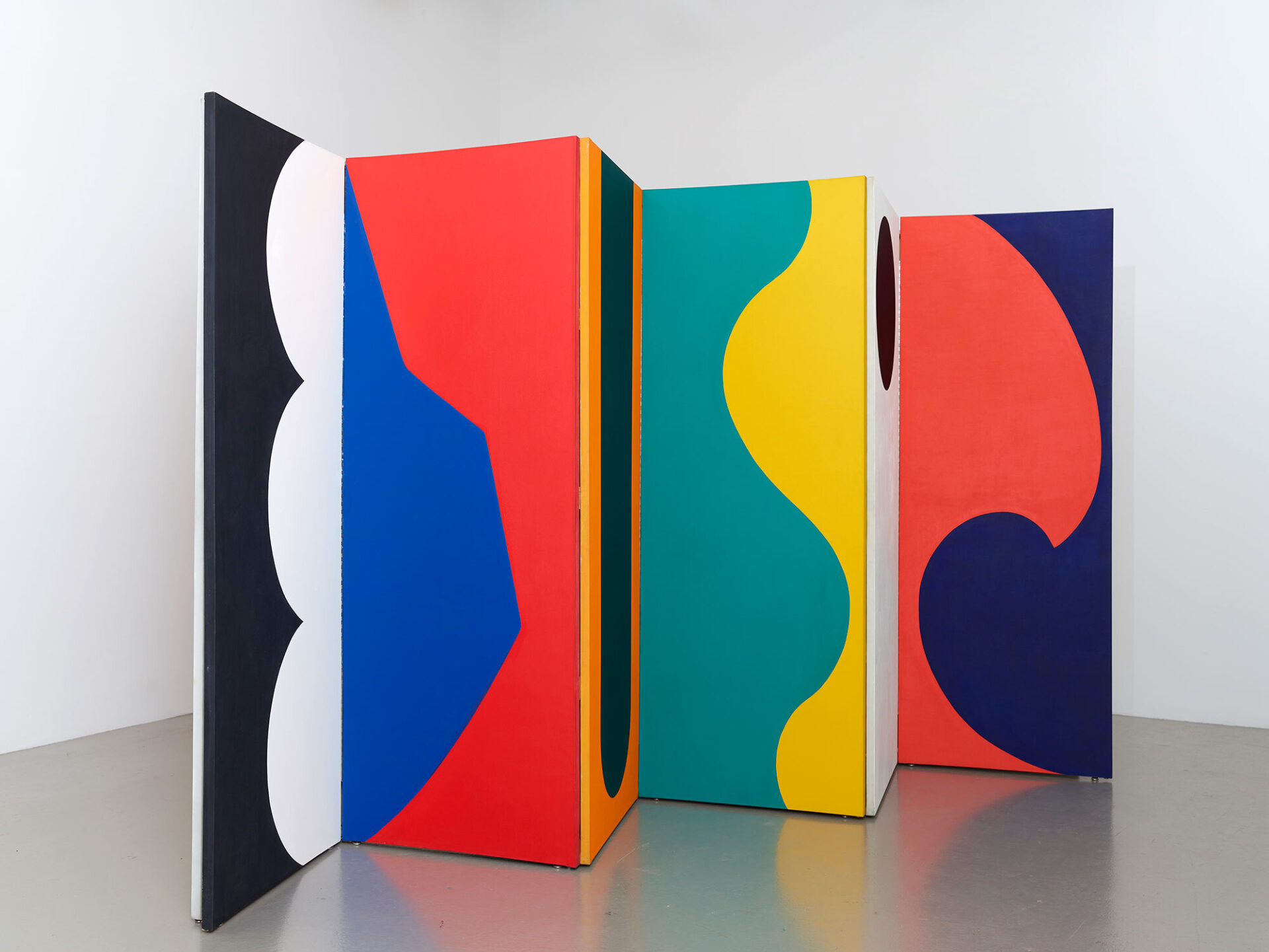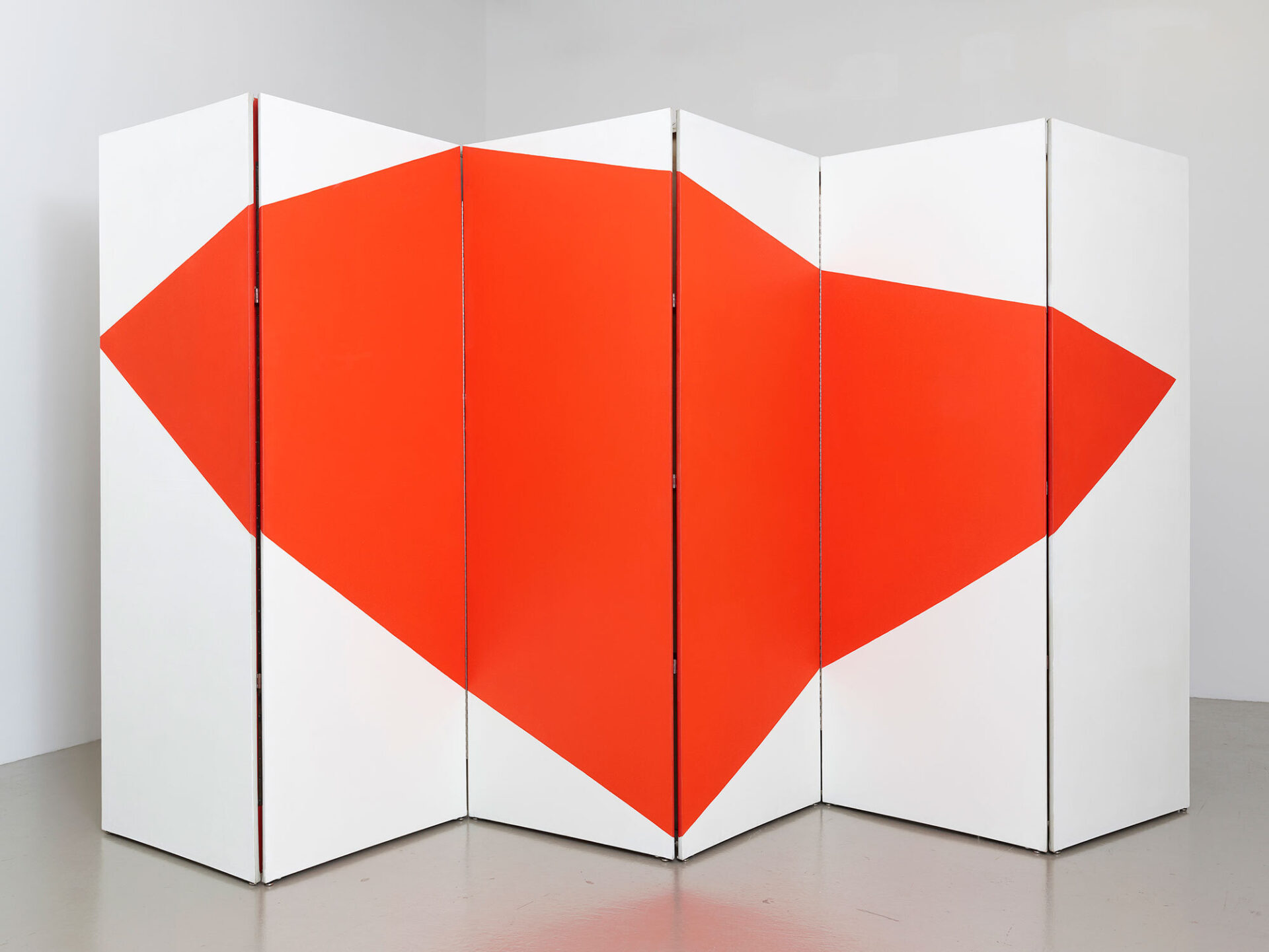
Leon Polk Smith
Going Beyond Space
Museum Haus Konstruktiv opens the 2023 exhibition year with a comprehensive show on US artist Leon Polk Smith (1906–1996). The retrospective is Europe’s first institutional solo exhibition on this artist in about 20 years – and the first ever in a Swiss museum. On four floors, it brings together works from almost all his periods, from the mid-1940s to the late 1980s, and presents them in largely chronological order.
Leon Polk Smith was one of the most important representatives of geometric abstraction and a co-founder of Hard-edge painting. He was born and raised in Chickasha, a town in what was called Indian Territory, which then became part of the newly founded state of Oklahoma in 1907. He started producing his first paintings in the 1930s and also graduated from college with a teaching qualification. During several study trips to New York City, which began in 1936, and especially when he moved to that metropolis in 1944, Smith came into contact with classic modernist artists and works, as well as the current art movements. It was mainly the visual language of Piet Mondrian that prompted the young artist to create orthogonal visual compositions at first, in primary colors. Smith soon introduced the diagonal and began to seek a way out of Mondrian’s design principles, which he considered too narrow. Via a sporting goods brochure that contained drawings of balls for sports such as basketball and tennis, Smith arrived at the round painting format, to which he now transferred his orthogonal compositions, while also integrating smooth flowing lines.
This exhibition was realized in close collaboration with the New-York-based Leon Polk Smith Foundation and features major works on loan from private and public collections in Switzerland and abroad. Chronologically, it begins just a wall away from Fritz Glarner’s Rockefeller Dining Room (1964/65) on the 5th floor. Glarner and Smith knew each other through their involvement in the same exhibitions and they shared an interest in Mondrian. Alongside early 1940s works with references to Mondrian, the works selected for this exhibition include various tondi and shaped canvases from the 1950s, as well as pieces from the 1960s: wooden reliefs, prints, collages made from torn colored paper, and a 1966 folding screen that is painted on both sides. In the 1980s and 1990s, Smith developed his works into large-format visual compositions, increasingly invoking the depth of feeling that he had for space as a result of his childhood and youth on the plains of Oklahoma. His experiences from that time resonate in titles like Prairie Moon (1988) and Sunset Caribe (1983). At Museum Haus Konstruktiv, these and other works from this context are presented in the small exhibition space on the 4th floor.
9.2.–7.5.2023
curated by Sabine Schaschl


The Correspondences and Constellations series are considered highlights of Smith’s oeuvre. The exhibition pays particular attention to these on the 1st and 2nd floors. From 1960 onward, in his Correspondences, Smith developed numerous possibilities for visual composition, derived from a single drawn line. He described the process in a 1964 interview with the author and artist d’Arcy Hayman as follows:
The proportion, the size of the canvas often suggests a form. I will get up and draw this one line through the canvas which creates two forms, one on either side of the line, and while I am drawing this line, it seems that I am travelling many, many miles in space […] I begin to feel the tensions develop and the forces working on either side of this line; there is a color often suggested, usually the color that I am going to use.
These paintings that ‘correspond’ in a special way in terms of form and color were taken to another level from 1967 onward in his Constellations, an exemplary selection of which is shown in the exhibition. In the Constellations, the artist built on his experiences from the Correspondences series, now applying them to differently shaped canvases composed of several individual parts. These multi-part works can be made up of round or oval image carriers, but also of triangles, squares or rectangles, which can all have rounded corners. In this series, colors and forms extend beyond individual canvases into neighboring canvases, creating new shared forms and spaces.


Smith produced the 1988 piece Constellation Twelve Circles for the New Jersey premises of the company Ciba-Geigy (now Novartis) and it has never been presented in a museum until now. Developed from a 1969 Constellation of the same name, which was painted in oil on canvas, the later, enlarged version was realized on aluminum panels. In several sketches and drawings, Smith recorded various possible ways to hang this work (vertically, horizontally and at a 45° angle). At Museum Haus Konstruktiv, the piece is shown tilted by 45° for the first time. Comprising seven visual elements, this work is painted in violet, red, blue and orange in such a way that various circles form across the exhibition wall and between the individual picture formats – or are hinted at, either as circles within circles or via segmented curves. The image carriers, exhibition wall and painted forms enter into a unique symbiosis that plays with spatial perception.
Through their interplay, the show’s exhibits clearly demonstrate the rich diversity to be found in the decades-spanning oeuvre of this artist, who has almost been forgotten in Europe. It is an oeuvre characterized by a high degree of dynamism, elegance and sensuality, which also consistently conveys a profound connection to the landscape and the culture of Native Americans in the heart of the southern USA. Leon Polk Smith once said that he never thought of nature as stopping at our sky, and that he always saw his paintings as “going beyond earth”. The exhibition title Going Beyond Space incorporates this notion.

Smith’s oeuvre has been honored in numerous exhibitions. His first solo exhibition was held in 1941 at Uptown Gallery in New York City. His work was shown in the group exhibition Post-Mondrian Painters at the Sidney Janis Gallery in New York City, along with that of Josef Albers, Ilya Bolotowsky, Fritz Glarner and others. Max Bill selected one of Smith’s works for the 1960 exhibition konkrete kunst – 50 jahre entwicklung (concrete art – 50 years of development), which was curated by Bill and held at Helmhaus Zurich. His first comprehensive retrospective took place in 1989, at the Wilhelm Hack Museum in Ludwigshafen am Rhein and at Musée de Grenoble. This was followed by a retrospective at the Brooklyn Museum in 1995. Various solo exhibitions have been held posthumously, including Leon Polk Smith in the Arithmeum, University of Bonn, in 2001, and Hiding in Plain Sight, Heard Museum, Phoenix, Arizona, in 2021.
Coinciding with the exhibition, a catalog will be published in April 2023 by Hatje Cantz (in German and English) with text contributions by Sabine Schaschl (director of Museum Haus Konstruktiv), Brandon Taylor (Professor Emeritus of Art History at the University of Southampton, UK), Margit Weinberg Staber (art publicist and first director of Museum Haus Konstruktiv) and David M. Roche (director of the Heard Museum in Phoenix, Arizona), as well as numerous pictures of the exhibition.
Made possible by the substantial support of

Additional support of
Leon Polk Smith Foundation
Lisson Gallery
Museum Haus Konstruktiv is supported by its patrons, members and
